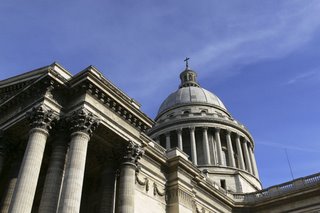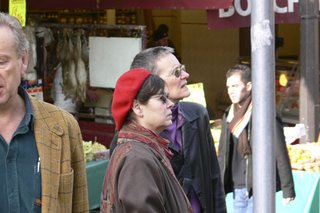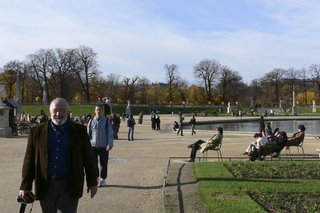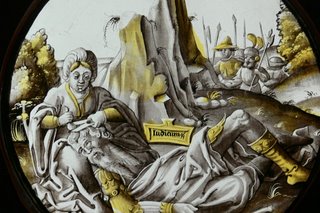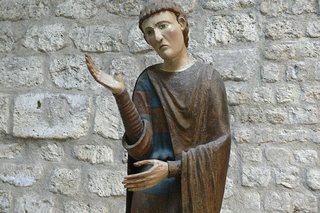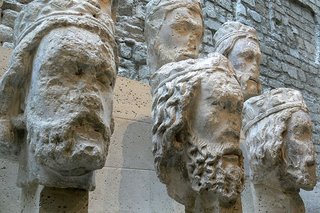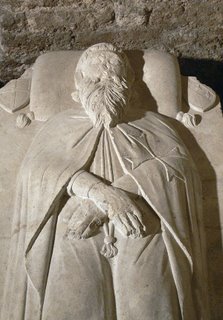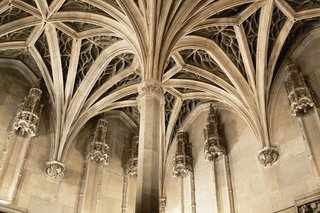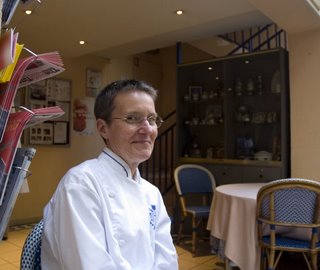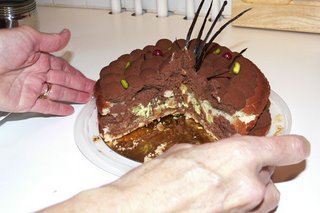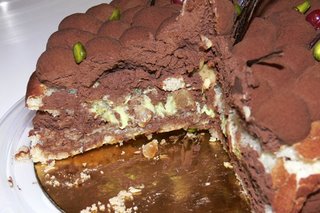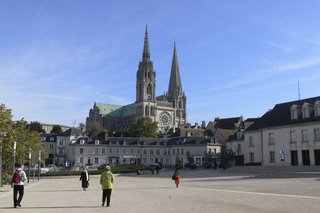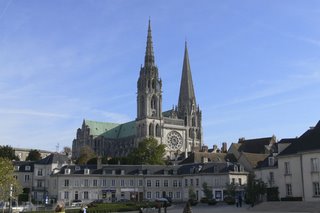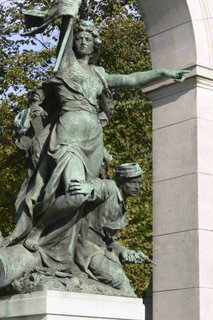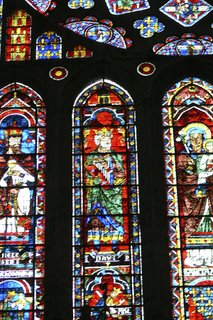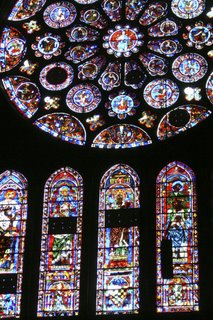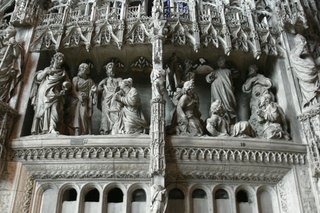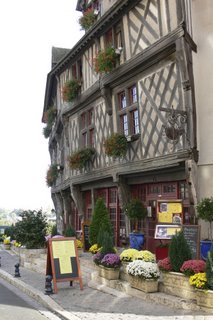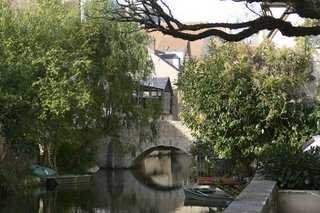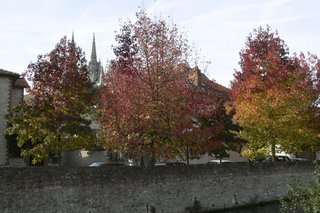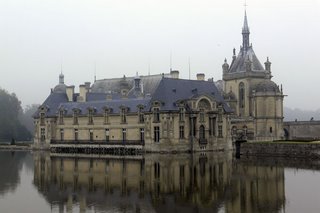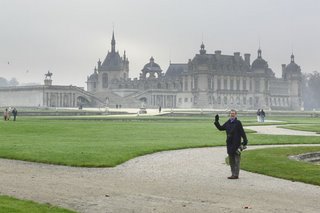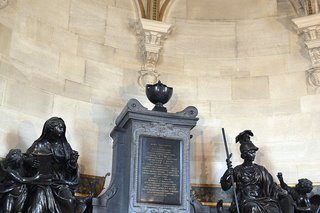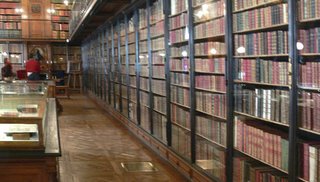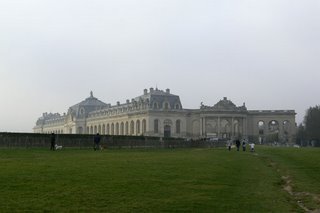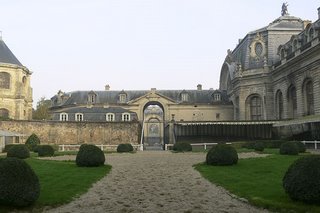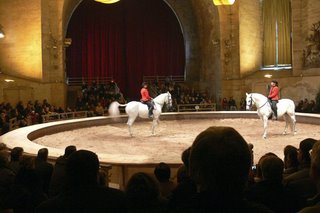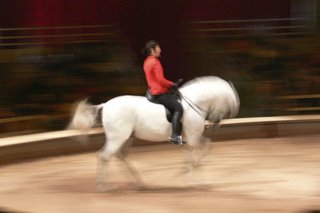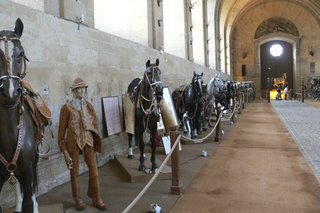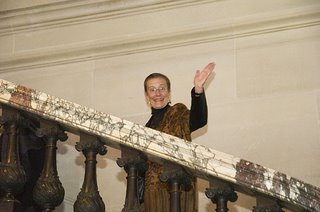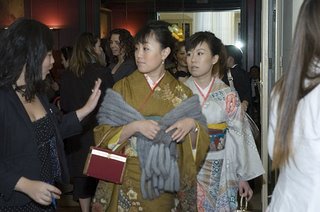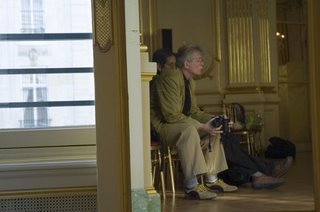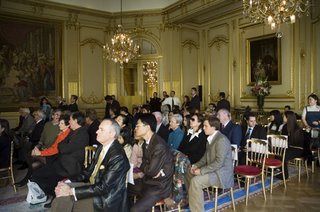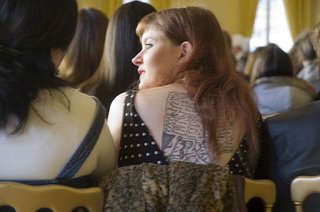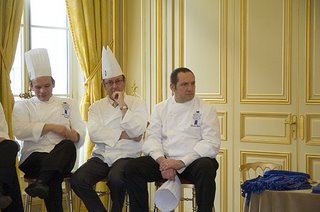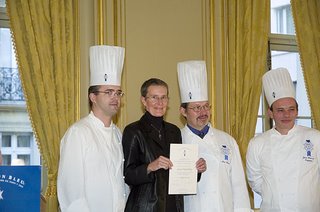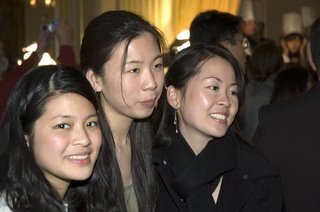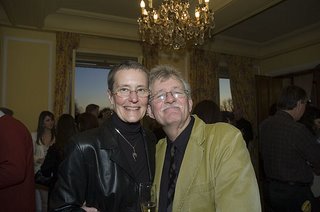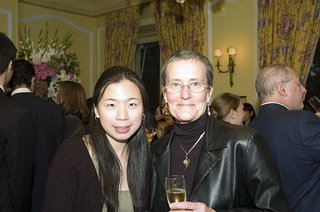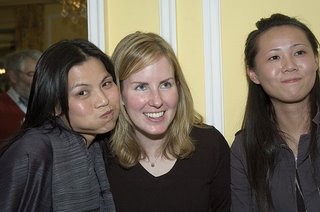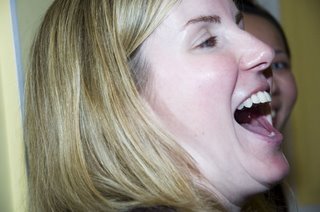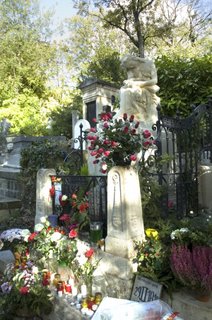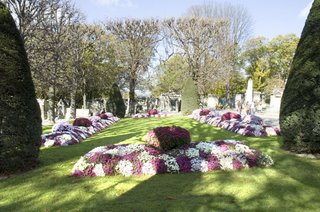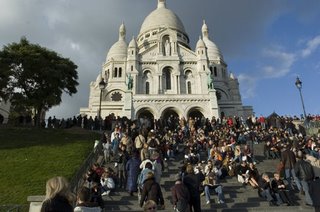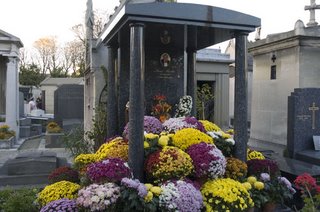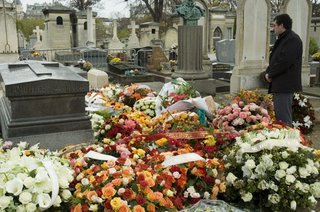 Monday turned out to be a wonderfully odd and interesting day.
Monday turned out to be a wonderfully odd and interesting day.It dawned clear and warm and with the good weather hanging on I headed over to Pere Lachaise to start videotaping the cemetery, division-by-division. (Susan had left for school early – in fact she leaves for school every day now.) I had no sooner dropped down into the Metro at Blvd Saint Michel than Marie called me to tell me she had bad news and then we were promptly cut off. (OK, Marie and her friend Philippe are two very knowledgeable local historians of Parisian cemeteries with whom I had a couple of meetings so far.) After I left the Metro at the Pere Lachaise stop I tried to get back to her a couple of times, left messages, and she called me back once but my phone was playing hide-and-seek in my jacket.
After this went on for about 20 minutes we hooked up at last. She informed me that the four busts in Pere Lachaise that I had identified as being missing had indeed been stolen. Her next move now is to draft a letter informing the powers-that-be of their recent misfortune. (You can find out more about the missing busts at my blog on Paris cemeteries. Just click here.)
Marie then told me that she and Philippe were going to be at Montparnasse later in the day to look for one or two people (residents of course), to check on another missing bust and then they were going to hang around for the funeral of a famous French film star later that afternoon.
“Maybe you’ve heard of him, she asked? “Philippe Noiret?”
“Of course!” I said. “C’est Alfredo”! Susan and I had just read in the papers that he had passed away in Paris but beyond that we had heard nothing else.
In fact I had been familiar with some of Philippe’s Noiret’s work for quite a few years, dating as far back as 1971 when he played a fantastic eccentric opposite Peter O’Toole in the WW2 film “Murphy’s War”. I also remember his face -- how could anyone forget it once you've seen it -- in the 1978 quirky comedy "Who's Killing the Great Chefs of Europe," and his very touching portrayal of Colonel Delaplane in the engaging and bittersweet story of love and war in “Life and Nothing But (La Vie et rien d'autre, 1989)”, and of course as Pablo Neruda in the Italian love story “Il Postino” (1994).
But it was his role as Alfredo, the irascible, endearing movie projectionist in another beautifully crafted Italian film “Cinema Paradiso” (1988) that moved both Susan and I to see the movie more than a dozen times over the years.
Told in flashbacks, Alfredo “unwillingly” takes the young boy Toto into his magical world of film, as an apprentice projectionist, a world the boy has only seen from afar (mainly from the seats in the audience). Little Toto, whose father perished on the Russian front, living in a tiny room with his mother and baby sister, barely eking out a living, and childless Alfredo become truly “father and son". But the film moves beyond such Disneyesque pretensions and tackles the real world head on. Alfredo, believing that Toto is destined for much greater things which can only be had for the price of leaving his past behind him eventually persuades the young man to leave his family, his village, everything, for the wider world of Rome, to make something of his life. And so he does eventually becoming one of Italy’s leading film directors.
As a young boy who spent much of his early years hiding out in movie theaters in central Illinois “Cinema Paradiso” touched me profoundly, it ‘spoke to me” as some are fond of saying today.
Naturally then I had to pay my respects to someone I had come to know so well – not Philippe Noiret, of course I never met him, but those delightful characters he had created; characters who told such marvelous stories with their faces.
And I knew Susan felt the same way so I tried reaching her at school but no luck. Well, no problem since she would call me as soon as she left school.
I met up with Marie and Philippe and they introduced me to their friend Hugo, a man who had clearly spent a lifetime working on his smile: it was a broad as his face. And of course he shared the same passion for cemeteries as the rest of us.
The funeral cortege was rumored to arrive in the cemetery about 4 pm – and the area near the grave was already cordoned off leaving the general public (us) to mill about behind the barricades waiting for things to happen; in fact there were probably a couple of thousand people hanging about.
A man strolled around the cordoned off area requested that no one take any photos, out of respect for the family. I packed my cameras away. (I returned Tuesday morning to photograph the graveside full of flowers.)
Susan, who was on her way home, duly called and when I told her what was happening she immediately retraced her steps back to Montparnasse and headed to the cemetery. A few minutes later she had joined our little party.
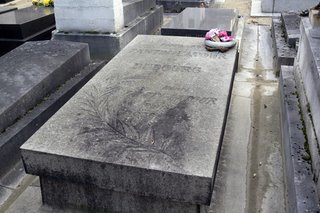
It was then announced that the funeral was running about an hour late so that gave Philippe time to show us a few of the notables buried nearby. But first he asked if there was anyone in particular I was looking for in Montparnasse. I said “Yes, Henri Fantin-Latour”, the French painter (1836-1904). Phillippe needed no further information. He immediately wheeled around and started zigzagging through a cemetery he obviously knew so well –he even had his large notebook with him which he referred to every now and then -- and a few moments later we were standing over Fantin-Latour’s grave. (photo above.) I snapped my photos and off we went weaving in and out among the headstones, dodging the occasional mud (it’s cleaning time of the year so there’s plenty of wet ground right now)
The five of us eventually worked our way back to the crowd and shortly afterwards the funeral cortege arrived: two Mercedes hearses with flowers inside as well as on top (very impressive) and then the one hearse bearing the plain wooden coffin, followed by family and friends who had been walking behind the vehicles.
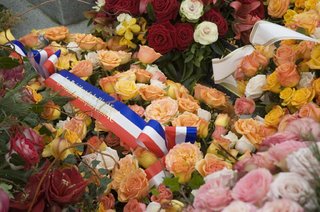 Susan remarked how strange it was, that one of the most poignant scenes in the movie “Cinema Paradiso” was the one in which the adult Toto has returned after 30 years to his home in Sicily to Alfredo’s funeral; and here we were attending the funeral of the man who portrayed that sublime character. Who would have thought, that the first time we watched “Cinema Paradiso”15 years ago, that someday we would be in Montparnasse cemetery in Paris, in the twilight of the day, watching Philippe Noiret’s body being laid to rest? (photo: if you look closely, the red white and blue beribboned flowers are from "Jacques" himself.)
Susan remarked how strange it was, that one of the most poignant scenes in the movie “Cinema Paradiso” was the one in which the adult Toto has returned after 30 years to his home in Sicily to Alfredo’s funeral; and here we were attending the funeral of the man who portrayed that sublime character. Who would have thought, that the first time we watched “Cinema Paradiso”15 years ago, that someday we would be in Montparnasse cemetery in Paris, in the twilight of the day, watching Philippe Noiret’s body being laid to rest? (photo: if you look closely, the red white and blue beribboned flowers are from "Jacques" himself.)Certainly not us.
The sun had set and darkness was fast overtaking the day. As the family and friends began breaking up so did the spectators. Susan and I said “au revoir” to Marie and Philippe – Hugo had left a bit earlier it seems – and I will probably be seeing them this weekend in Pere Lachaise. We then headed out of the cemetery. The large gates were closed and so everyone leaving had to squeeze out the small “man doors” and as we did so a wall of news people with video cameras and paparazzi immediately faced us. We waved, said “Hi mom” and “Thanks” and headed for the Metro.
“Merci, Alfredo, merci beaucoup.”
Wish you could have been here,
Steve
